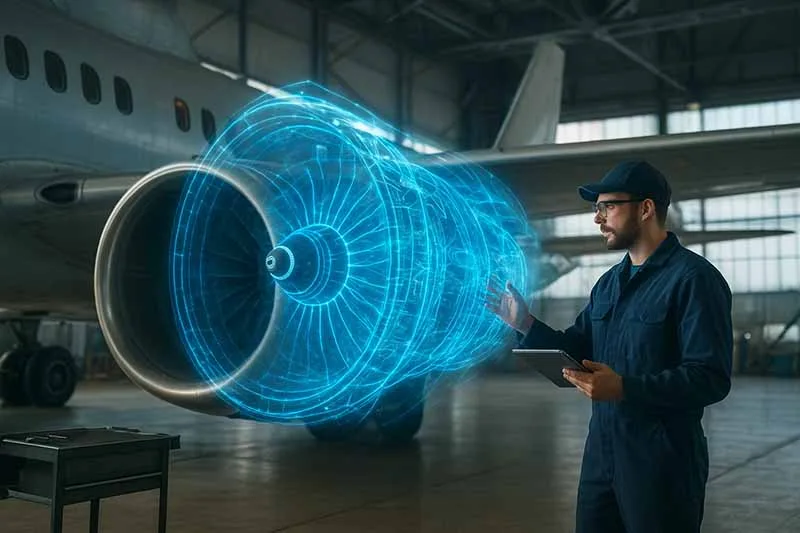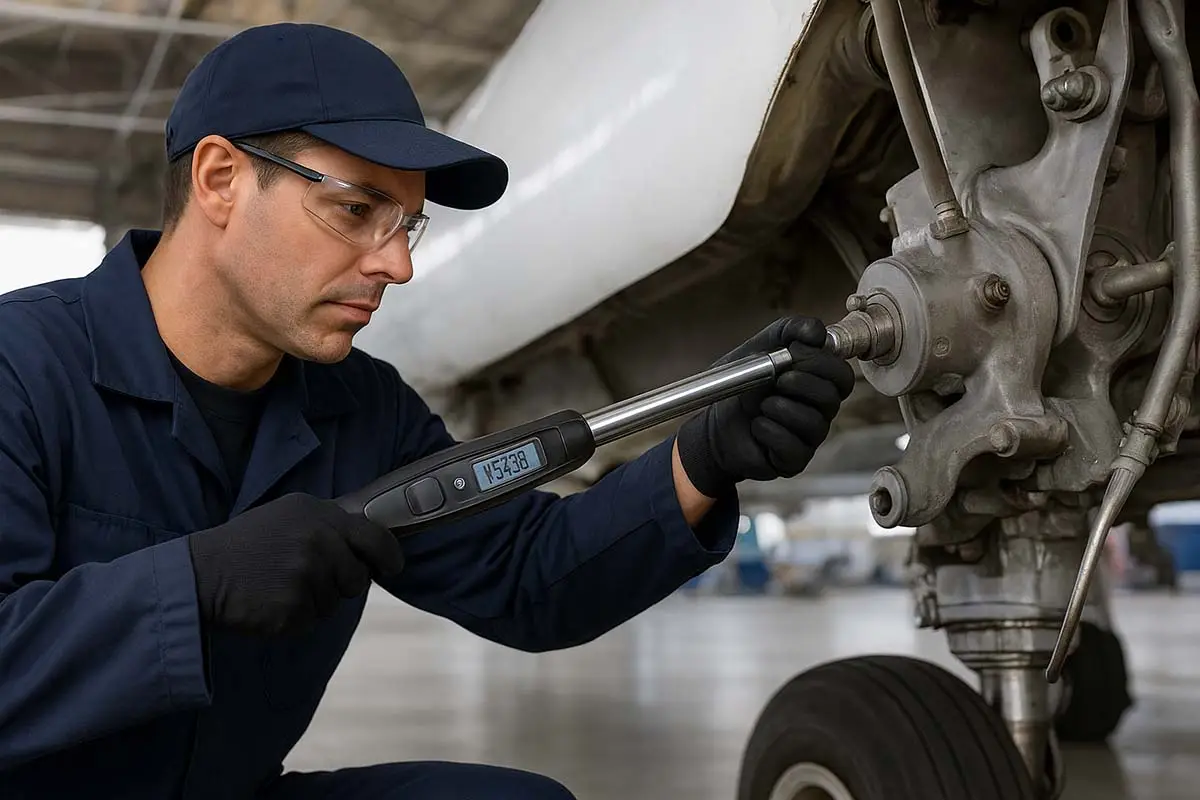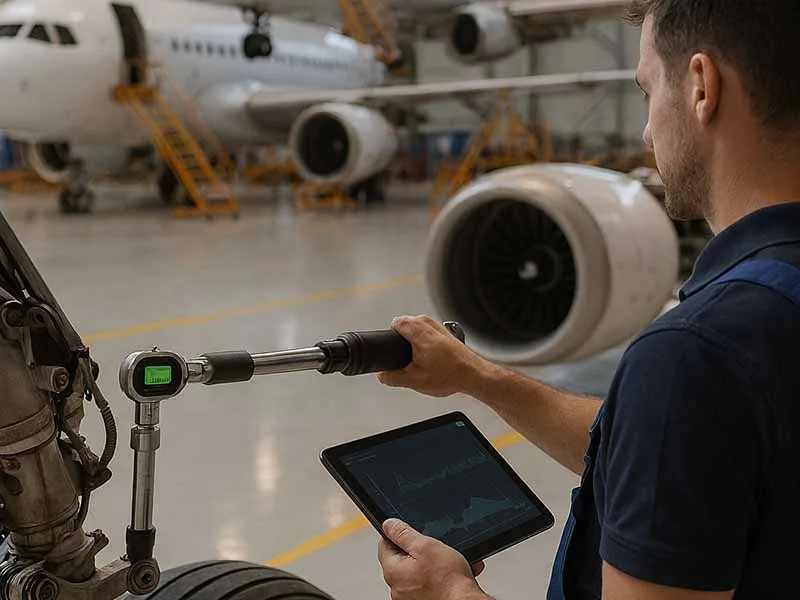Introduction: Why Digital Twins Matter in Aerospace
Imagine a world where your airplane engine tells you when it’s tired, cranky, or about to sneeze (metaphorically, of course). That’s not sci-fi—it’s digital twins in aerospace maintenance. By creating a virtual replica of physical components, engineers can monitor, test, and predict performance in real time.
Airlines, OEMs, and MROs are betting big on digital twin technology. But is it all smooth flying? Or are there some turbulence zones we need to acknowledge? This case study explores both the shiny promises and the hidden challenges of digital twins in aerospace.
What Is a Digital Twin in Aerospace?
A digital twin is a virtual model of a real-world asset—an engine, a wing, or even a full aircraft. It continuously receives data from sensors, IoT systems, and maintenance records to replicate the asset’s condition.
In aerospace, digital twins allow:
- Predictive maintenance – Spot issues before they cause breakdowns.
- Performance optimization – Adjust fuel burn, thrust, and efficiency.
- Lifecycle management – Track wear and tear across decades.
- Safety improvements – Detect anomalies that human eyes miss.
Case Study: Digital Twins in Jet Engine Maintenance
One of the most high-profile applications comes from Rolls-Royce’s “Intelligent Engine” program. By embedding IoT sensors and cloud analytics into engines, Rolls-Royce creates a twin that “lives” alongside the real machine.
Key Features:
- Continuous performance monitoring (fuel efficiency, vibration, heat)
- Predictive alerts before component failure
- Optimized overhaul schedules—fewer unnecessary part replacements
- Reduced downtime (up to 30% reported in early trials)
Research Data Point:
According to a 2024 Deloitte aerospace report, digital twins can reduce unplanned maintenance events by up to 25%, saving airlines millions per year.
The Bright Side: Benefits of Digital Twins
- Cost Savings: Airlines save money by replacing parts only when needed.
- Safety Gains: Early fault detection prevents catastrophic events.
- Sustainability: Optimized fuel use reduces CO₂ emissions.
- Faster Turnarounds: Planes spend less time grounded and more time flying revenue-generating routes.
The Not-So-Bright Side: Challenges and Risks
Let’s be honest—digital twins aren’t magic wands.
- High Setup Cost: Developing a digital twin for a jet engine can cost millions.
- Data Dependency: Garbage in, garbage out—bad sensor data ruins predictions.
- Cybersecurity Risks: A hacked twin could be as dangerous as a faulty part.
- Skill Gap: Aerospace engineers need training to interpret complex twin models.
Critical Point: Some smaller airlines struggle to justify the investment. What’s cost-effective for a mega airline may be a financial sinkhole for regional carriers.
Technical Specifications of Aerospace Digital Twins
While each system differs, most aerospace digital twins feature:
- IoT sensors: Measuring vibration, temperature, pressure.
- Data transmission protocols: Often using secure aviation-grade 5G or satellite links.
- Cloud computing & AI analytics: Real-time data crunching.
- Simulation engines: Running stress, fatigue, and performance models.
Lesser-Known Facts About Digital Twins in Aerospace
- Lesser-Known Fact 1: NASA pioneered digital twin concepts back in the 1960s during the Apollo program, when engineers simulated spacecraft behavior to troubleshoot malfunctions from Earth.
- Lesser-Known Fact 2: Some manufacturers now create “fleet twins”—a digital twin not just of one aircraft but of an entire airline fleet, helping optimize routes and maintenance schedules globally.
Funny Fact: Pilots joke that soon, “aircraft will have more digital clones than Hollywood celebrities.”
Interesting Fact
Digital twins aren’t just for engines. Airbus is experimenting with cabin layout twins to improve passenger comfort—meaning your seat space might one day be optimized by AI before you even book it.
Future Outlook: Where Are Digital Twins Taking Us?
The future of aerospace twins points toward fully autonomous maintenance ecosystems where:
- AI diagnoses problems in real time.
- Drones perform visual inspections.
- Maintenance crews receive step-by-step AR instructions.
But until then, human expertise remains irreplaceable. The smartest twin still needs a skilled mechanic with a wrench.
Digital Twins in Aerospace Maintenance FAQ
Conclusion
Digital twins are revolutionizing aerospace maintenance, making flying safer, greener, and more efficient. Yet, they’re not a silver bullet. Costs, data challenges, and cybersecurity remain real obstacles.
The takeaway? Digital twins are here to stay, but the industry must balance optimism with realism.
✈️ What do you think? Have you seen digital twins in action in aerospace or other industries? Share your thoughts in the comments below and spread the word on social media.





